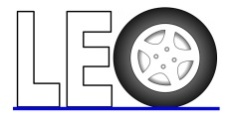Work Packages
Primary tabs
WP1: Project management - the general objective of this WP is to manage the project and to deliver its results in accordance with the planning and the budget.
WP2: Review of desired features related to the tyres of electric and hybrid vehicles and to road surfaces – the objective of this WP is to perform review and analysis of parameters related to vehicle tyres and road surfaces taking into account the special features of electric and hybrid vehicles that differ them from typical internal combustion vehicles including their construction parameters, driving conditions, driver behavior and vehicle operational area that is generally limited to city and agglomeration roads and streets. The review will be based on available literature and results from relevant projects, such as MIRIAM, CITY HUSH, GREEN CITY CAR, etc.
WP3: Noise measurements of tyres for electric and hybrid vehicles, such vehicles and road surfaces – The objective of this WP is to provide (via measurements) data relating the noise performance of optimized passenger car tyres for low rolling resistance on a selection of low noise pavements. The aim is to perform measurements using selected range of tyres, (at least 30) on selection of different road surface types (at least 30, including reference tyres and surfaces) both in Poland and Norway. The tyre/road noise will be measured by drum (DR) and Close Proximity (CPX) methods. Drum method will be implemented at TUG, on three roadwheel facilities equipped with replica road surfaces. DR method will be mostly utilized to search for low noise tyres. Tyre/road noise on selected road surfaces will primarily be done using the CPX trailer of the Norwegian Public Roads Administration. This will include commonly used road surfaces in Norway and Poland for reference. Measurements on porous road surface will be coordinated with the development of test surfaces in the PERSUADE project, in order to see if they can combine the ambition to reduce both the energy consumption/rolling resistance and noise. In addition to poroelastic test surfaces, we will also include measurements on special low noise surfaces such as the NANOSOFT from COLAS, already available on several locations in Poland. In addition to CPX measurements, pass-by noise measurements will be done on selected electric and hybrid vehicles with tyres showing the best results from rolling resistance and noise measurements performed in the TUG laboratory. The pass-by measurements will be made at speed range from 20 to 70 km/h, which are the speeds normally used in urban driving conditions. Tyres will be selected based on the measurement results of the rolling resistance on the TUG drum.
WP4: Rolling resistance optimization of tyres for electric and hybrid vehicles and road surfaces - The objective of this WP is to provide (via measurements) data related to rolling resistance of the state-of-the-art tyres and road surfaces that are advantageous for EV and HV in urban traffic and to establish model of resistive forces for those vehicles. TUG owns two roadway facilities equipped with replica road surfaces that will be used for laboratory measurements of rolling resistance of different car tyres. The facilities utilize "torque method" of rolling resistance measurements and may provide cheap, yet very precise evaluation of rolling resistance coefficients for great number of tyres including prototypes that are not homologated for road use. Road measurements will utilize R2 trailer designed and build at TUG. The trailer is of an unique design and is one of a few trailers in the world that measures rolling resistance of car tyres. The trailer will be used for evaluation of road surface influence on rolling resistance and for search for low rolling resistance surfaces. At least 30 tyres and 50 road surfaces will be tested. Special tests of all components of resistive forces acting on electric and hybrid vehicles will be performed on selected vehicles. It is planned that TUG will buy Racelogic system to measure speed, position and acceleration of tested vehicles.
WP5: Feasibility study and cost/benefit analysis – The objective of this WP is to demonstrate to the authorities the possible consequences of the use of state-of-the-art and optimized tyres as well as road surfaces in combination with EV and HV in urban traffic. The feasibility study will be based on the calculation methods developed by H. Steven, Germany, such as Mobilev/Tranecam. These models enable to establish different scenarios for the introduction of low-noise pavements and EV or HV with optimized tyres. The models have been extensively used in other projects such as SILENCE, RoTraNoMo and the FEHRL study on tyre/road noise (2006). The cost/benefit analysis (CBA) will be made by the Institute of Transport Economics (TØI) in Oslo as a subcontractor to SINTEF (the cost of subcontracting is included to the budget as "other costs"). The analysis will be based on a model for CBA of changes from standard to low-noise pavements, developed by Sælensminde and Veiesten (TØI) within the EU project SILVIA (2006). Within the EU project HOSANNA (2009) this model has been further developed into a web-based tool for CBA (Klæboe 2011,Veiesten et al, 2012). The CBA will include Monte Carlo simulation and sensitivity analysis.
WP6: Dissemination and information management - the objective of this WP is to disseminate the State-of-the-Art report, the final report and other results, including all technical reports of the project among vehicle, tyre and road builders as well as road and municipal authorities and general public. During Final Seminar the outcome of the project will be presented and distributed. The website will be created to make all the project information easy available to the public.




